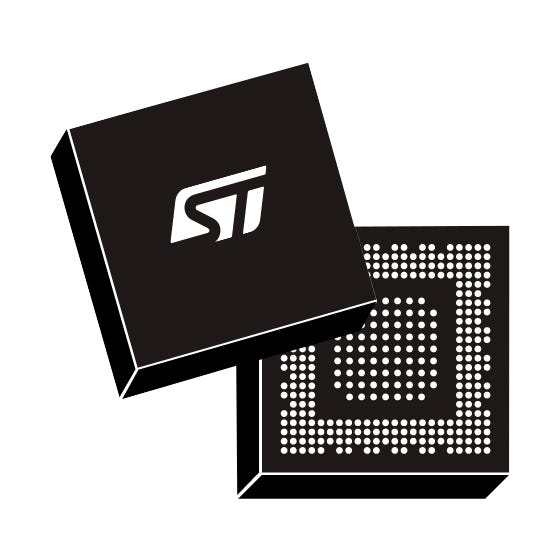🎉 Exclusive offer: FREE shipping of all MCU & MPU products. No code or minimum required. 🛒 Order now!
📢 Bonus offer: Get our latest VIPGAN65 board with Free shipping. Use code DV-EVLVIPGAN65DF-FREESHIP-05 at checkout! 🛒 Claim now!
Active
STM32MP157AAC3T
MPU with Arm Dual Cortex-A7 650 MHz, Arm Cortex-M4 real-time coprocessor, 3D GPU, TFT/MIPI DSI displays, FD-CAN
| Supply Voltage Min Volt | 1.71 |
| Supply Voltage Max Volt | 3.6 |
| Operating Temp Min Celsius | -40.0 |
| Operating Temp Max Celsius | 125.0 |
| Core | Arm Cortex-A7 |
| ECCN US | 3A991.a.2 |
| ECCN EU | NEC |
| Packing Type | Tape And Reel |
| RoHs compliant | Ecopack2 |
| Grade | Industrial |
| Package Name | TFBGA 361 12x12x1.2 P 0.5 mm |
The STM32MP157A/D devices are based on the high-performance dual-core Arm® Cortex®-A7 32-bit RISC core operating at up to 800 MHz. The Cortex-A7 processor includes a 32-Kbyte L1 instruction cache for each CPU, a 32-Kbyte L1 data cache for each CPU and a 256-Kbyte level2 cache. The Cortex-A7...
Read More
|
| Quantity | $ per unit | Savings |
|---|---|---|
| 1-9 | $17.94 | 1% |
| 10-24 | $14.29 | 19% |
| 25-99 | $13.31 | 25% |
| 100-249 | $12.13 | 32% |
| 250-499 | $11.56 | 35% |
| 500-999 | $11.27 | 36% |
| 1000-10000 | $11.26 | 36% |
| 10000 + |
Contact sales |
|
| Supply Voltage Min Volt | 1.71 |
| Supply Voltage Max Volt | 3.6 |
| Operating Temp Min Celsius | -40.0 |
| Operating Temp Max Celsius | 125.0 |
| Core | Arm Cortex-A7 |
| ECCN US | 3A991.a.2 |
| ECCN EU | NEC |
| Packing Type | Tape And Reel |
| RoHs compliant | Ecopack2 |
| Grade | Industrial |
| Package Name | TFBGA 361 12x12x1.2 P 0.5 mm |
The STM32MP157A/D devices are based on the high-performance dual-core Arm® Cortex®-A7 32-bit RISC core operating at up to 800 MHz. The Cortex-A7 processor includes a 32-Kbyte L1 instruction cache for each CPU, a 32-Kbyte L1 data cache for each CPU and a 256-Kbyte level2 cache. The Cortex-A7...
Read More
|






